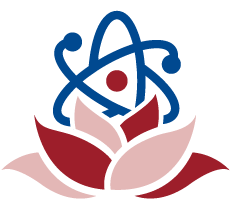| prey བརྔོན་བྱ། | biol. | |
| pretend kindness བྱམས་བརྩེ་བཅོས་མ། | SEE Learning | |
| presynaptic མཐུད་མཚམས་སྔོན་གྱི། | neurosci. Situated in front of or occurring before a synapse: a presynaptic nerve fiber; a presynaptic stimulus. | མཐུད་མཚམས་ཤིག་གི་སྔོན་དུ་གནས་པའམ་འབྱུང་བ་ལ་གོ དཔེར་ན། མཐུད་མཚམས་སྔོན་གྱི་དབང་རྩའི་ཉག་མ་དང་། མཐུད་མཚམས་སྔོན་གྱི་སྐུལ་རྐྱེན་ལྟ་བུ། |
| presupplementary motor region འགུལ་སྐྱོད་ཁ་སྐོང་ས་ཁུལ་གྱི་མདུན་ཆ། | neurosci. | |
| pressure suit གནོན་ཤུགས་འགོག་ཁྲབ། | phys. A garment that is worn in high-altitude aircraft or in spacecraft to compensate for low-pressure conditions. | མཐོ་ཚད་མཐོན་པོར་འཕུར་བའི་གནམ་གྲུའི་ནང་ངམ་མཁའ་གྲུའི་ནང་གི་གནོན་ཤུགས་དམའ་བའི་གནས་སྟངས་ཁ་གསབ་བྱེད་པའི་ཆེད་དུ་གྱོན་པའི་གྱོན་ཆས་ལ་གོ |
| pressure point གསང་དམིགས། | biol. Any of several points on the body at which an underlying artery can be pressed against a bone to stop distal bleeding. | པགས་པའི་འོག་གི་འཕར་རྩ་དེ་རུས་པའི་ངོས་སུ་བཙུར་བ་ལ་བརྟེན་ནས་ལུས་པོའི་ཕྱི་ངོས་ནས་ཁྲག་ཐོན་བཞིན་པ་དེ་འགོག་ཐུབ་པའི་གནས་གང་ཡང་རུང་བ་ཞིག་ལ་གོ |
| pressure གནོན་ཤུགས། | phys. Force per surface area where the force is normal (perpendicular) to the surface; measured in pascals. See also atmospheric pressure. Pressure = force/area | རྒྱ་ཁྱོན་གྲུ་བཞི་མ་རེ་རེའི་སྟེང་དུ་ཕོག་པའི་དྲང་ཤུགས་ (དྲང་འཕྱང་) ལ་གོ་ཞིང་པ་སི་ཀལ་དུ་ཚད་འཇལ་བྱེད། རླུང་གནོན་ལ་ཡང་གཟིགས་རོགས། གནོན་ཤུགས།=ཤུགས།/རྒྱ་ཁྱོན། |
| preserve བདག་ཉར། | Maintain (something) in its original or existing state. | (དངོས་པོ་ཞིག་) རང་གི་ཐོག་མའི་གནས་བབ་བམ་ད་ལྟའི་གནས་བབ་ལ་རྒྱུན་གནས་བྱེད་དུ་འཇུག་པ། |
| presentation སྤྱན་བསྟར། | SEE Learning | |
| Preoperational Stage ལས་སྒྲུབ་སྔོན་འགྲོའི་རིམ་པ། | Pedagog. | |
| Prenatal མ་བཙའི་གོང་། | biol. | |
| prenatal exposure མ་བཙས་གོང་གི་རྐྱེན་འཕྲད། | biol. | |
| premotor cortex མདུན་གྱི་འགུལ་སྐྱོད་ཀླད་ཤུན། | neurosci. The premotor cortex is an area of motor cortex lying within the frontal lobe of the brain just anterior to the primary motorcortex. The functions of the premotor cortex are diverse and not fully understood. | མདུན་གྱི་འགུལ་སྐྱོད་ཀླད་ཤུན་ནི་མདུན་འདབ་ཀྱི་ནང་དུ་འགུལ་སྐྱོད་ཀྱི་སྔ་རིམ་ཀླད་ཤུན་གྱི་མདུན་ཏག་ཏག་ན་ཡོད་པའི་འགུལ་སྐྱོད་ཀླད་ཤུན་གྱི་ས་ཁུལ་ཞིག་ཡིན། འདིའི་བྱེད་ལས་ནི་སྣ་མང་ཞིག་ཡིན་པ་དང་ཁ་གསལ་རྟོགས་མེད། |
| premotor area འགུལ་སྐྱོད་མདུན་གྱི་ས་ཁུལ། | neurosci. | |
| premise སྔ་བརྗོད། | phil. A proposition upon which an argument is based or from which a conclusion is drawn. | བགྲོ་གླེང་ཞིག་གི་རྩོད་གཞིར་གྱུར་བའི་དམ་བཅའ་ཞིག་གམ། མཇུག་སྡོམ་བརྗོད་པ་ཞིག་གི་གཞིར་གྱུར་བའི་སྒྲུབ་ངག་ཅིག |
